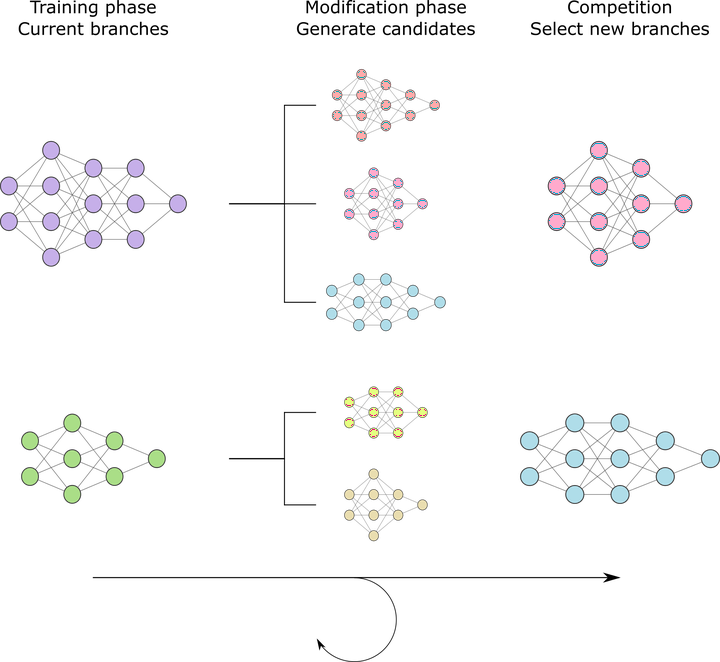 © 2021 E.J. Schiessler et al., CC BY 4.0
© 2021 E.J. Schiessler et al., CC BY 4.0Abstract
With ever increasing computational capacities, neural networks become more and more proficient at solving complex tasks. However, picking a sufficiently good network topology usually relies on expert human knowledge. Neural architecture search aims to reduce the extent of expertise that is needed. Modern architecture search techniques often rely on immense computational power, or apply trained meta-controllers for decision making. We develop a framework for a genetic algorithm that is both computationally cheap and makes decisions based on mathematical criteria rather than trained parameters. It is a hybrid approach that fuses training and topology optimization together into one process. Structural modifications that are performed include adding or removing layers of neurons, with some re-training applied to make up for any incurred change in input–output behaviour. Our ansatz is tested on several benchmark datasets with limited computational overhead compared to training only the baseline. This algorithm can achieve a significant increase in accuracy (as compared to a fully trained baseline), rescue insufficient topologies that in their current state are only able to learn to a limited extent, and dynamically reduce network size without loss in achieved accuracy. On standard ML datasets, accuracy improvements compared to baseline performance can range from 20% for well performing starting topologies to more than 40% in case of insufficient baselines, or reduce network size by almost 15%.